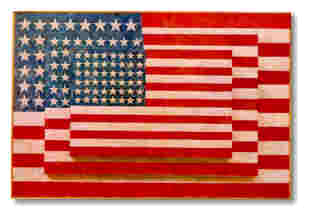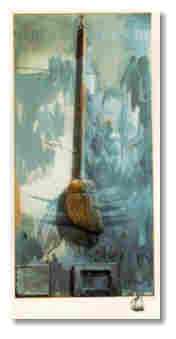



Born in Georgia and raised in South Carolina,
Johns served in the army and then settled in New York in 1952.
In 1958 he exhibited his series of paintings off flags and targets,
images he used for their 'p' reformed, conventional, depersonalized"
aspect. Later, Johns, like Robert Rauschenberg, incorporated real
objects in his work. Both artists reacted against the philosophic
assertions of the Abstract Expressionists and, in returning to
identifiable imagery, opened the possibili ty
of Pop Art."
ty
of Pop Art."
JOHNS' THOUGHTS ON ART
"Sometimes I see it and then paint it. Other times I paint it and then see it. Both are impure situations, and I prefer neither."
"At every point in nature there is something to see. My work contains similar possibilities fo
r the changing focus of the eye."
"Three academic ideas which have been of interest to me are what a teacher of mine (speaking of Cezanne and Cubism) called "the rotating point of view" (Larry Rivers recently pointed to a black rectangle, two or three feet away from where he had been looking in a painting, and said " . . . like there's something happening over there too."); Marcel Duchamp's suggestion "to reach the Impossibility of sufficient memory to transfer from one like object to another the memory imprint"; and Leonardo's idea ("Therefore, O painter, do not surround your bodies with lines . .") that the boundary of a body is neither a part of the enclosed body nor a part of the surrounding atmosphere."
"Generally, I am opposed to painting which is concerned with conceptions of simplicity. Every thing looks very busy to me." [1959]
INTRODUCTION WHAT ART IS SPIRIT OF ART REFLECTIONS BY ARTISTS MY WORKS OF ART